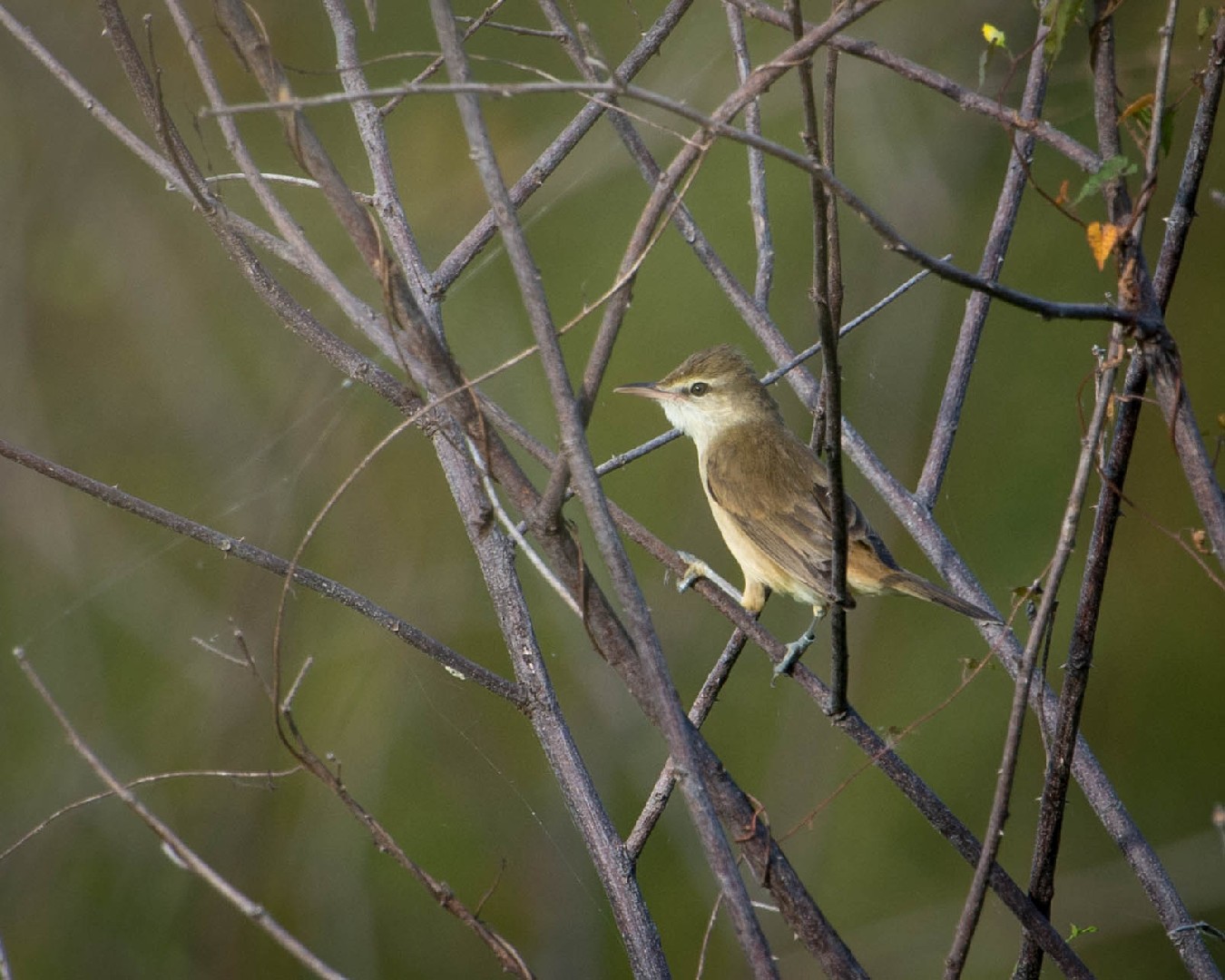Oriental Reed Warbler
A species of Reed-warblers Scientific name : Acrocephalus orientalis Genus : Reed-warblers
Oriental Reed Warbler, A species of Reed-warblers
Botanical name: Acrocephalus orientalis
Genus: Reed-warblers
Content
Description General Info
Description
It is a large warbler, 18–20 cm long with a wingspan of 23–26 cm. The plumage is brown above with a paler rump and whitish tips to the tail feathers. The underparts are whitish below, browner on the flanks and undertail-coverts. There are narrow greyish streaks on the throat and breast. It has a dark eyestripe and a whitish stripe above the eye. The fairly long, heavy bill is brownish above and pink below with a bright orange gape. The feet are grey. It is slightly smaller, slenderer and shorter-winged than the great reed warbler. Its tail is shorter and more square-ended than that of the clamorous reed warbler (A. stentoreus) and it has a slightly longer primary projection and a slightly shorter and thicker bill. The pale tip to the tail separates it from both species. The song is a mixture of warbling phrases and guttural, croaking notes. It is given from a prominent perch such as the top of a reed stem or bush. The bird also has a loud, harsh chack call. 
Size
18 cm (7 in)
Nest Placement
Shrub
Feeding Habits
Oriental Reed Warbler primarily consumes insects, arachnids, and small snails, with occasional small vertebrates. Nestlings in Honshu feed on a variety of insects and other invertebrates and sometimes fish fry or young frogs. Typical foraging occurs in dense vegetation, akin to the A. arundinaceus.
Habitat
The oriental Reed Warbler thrives in diverse wetlands, favoring dense, Phragmites-dominated reedbeds in lowland areas. Common habitats include lakeshores, coastal marshes, estuaries, and riversides, as well as grasslands and agricultural territories like rice paddies. Adaptable to elevation changes, the oriental Reed Warbler resides up to 1000 meters, with its range encompassing Northeast Asia and non-breeding habitats extending into Southeast Asia.
Dite type
Insectivorous
General Info
Feeding Habits
Bird food type
Distribution Area
The breeding range covers southern Siberia, Mongolia, northern, central and eastern China, Korea and Japan. It winters in north-east India and across South-east Asia to the Philippines and Indonesia, occasionally reaching New Guinea and Australia. It has occurred as a vagrant in Israel and Kuwait. It breeds mainly in reedbeds and can also be found in marshes, paddy fields, grassland and scrub where it forages for insects and other invertebrates. 
Species Status
Not globally threatened.
Scientific Classification
Phylum
Chordates Class
Birds Order
Perching birds Family
Reed warblers Genus
Reed-warblers Species
Oriental Reed Warbler 